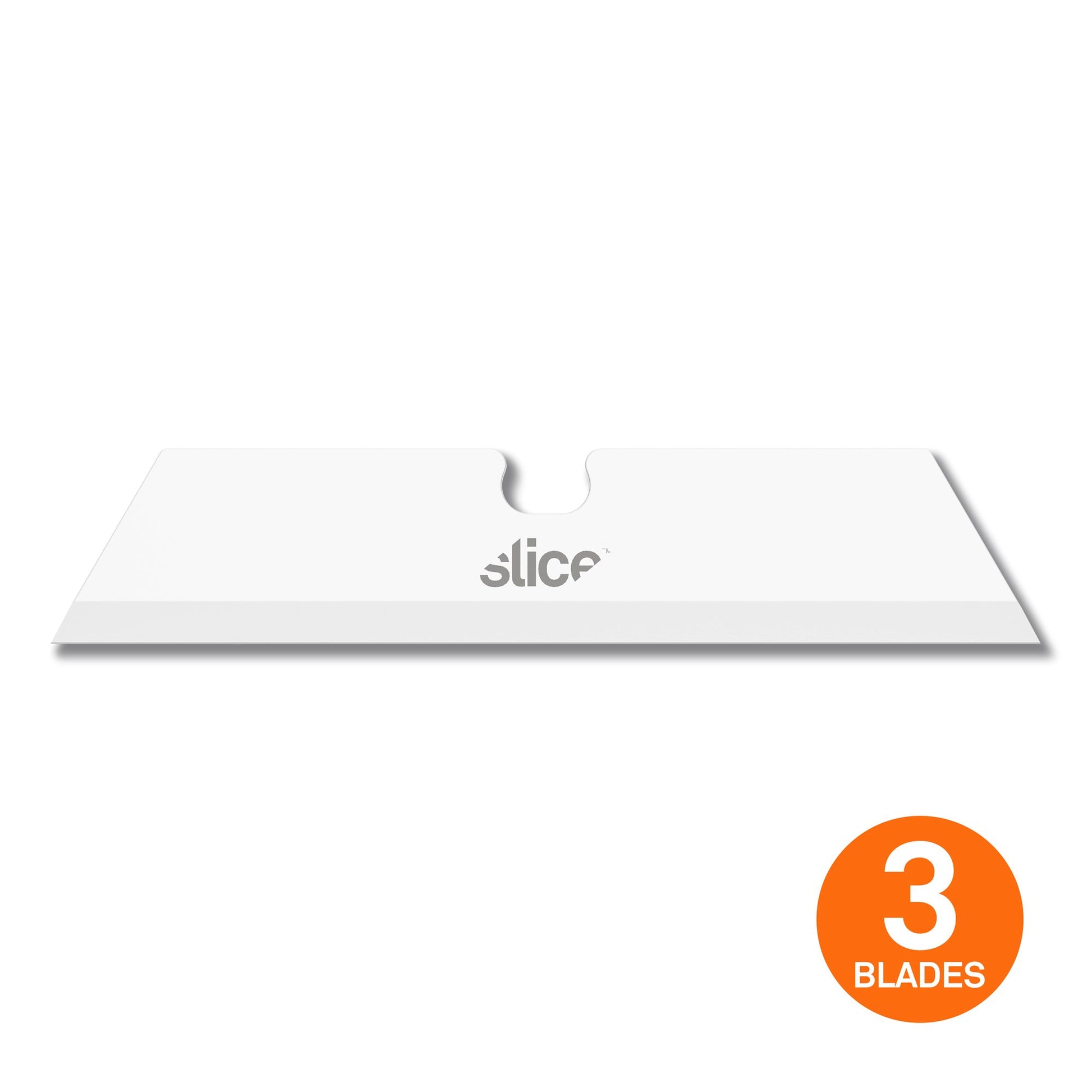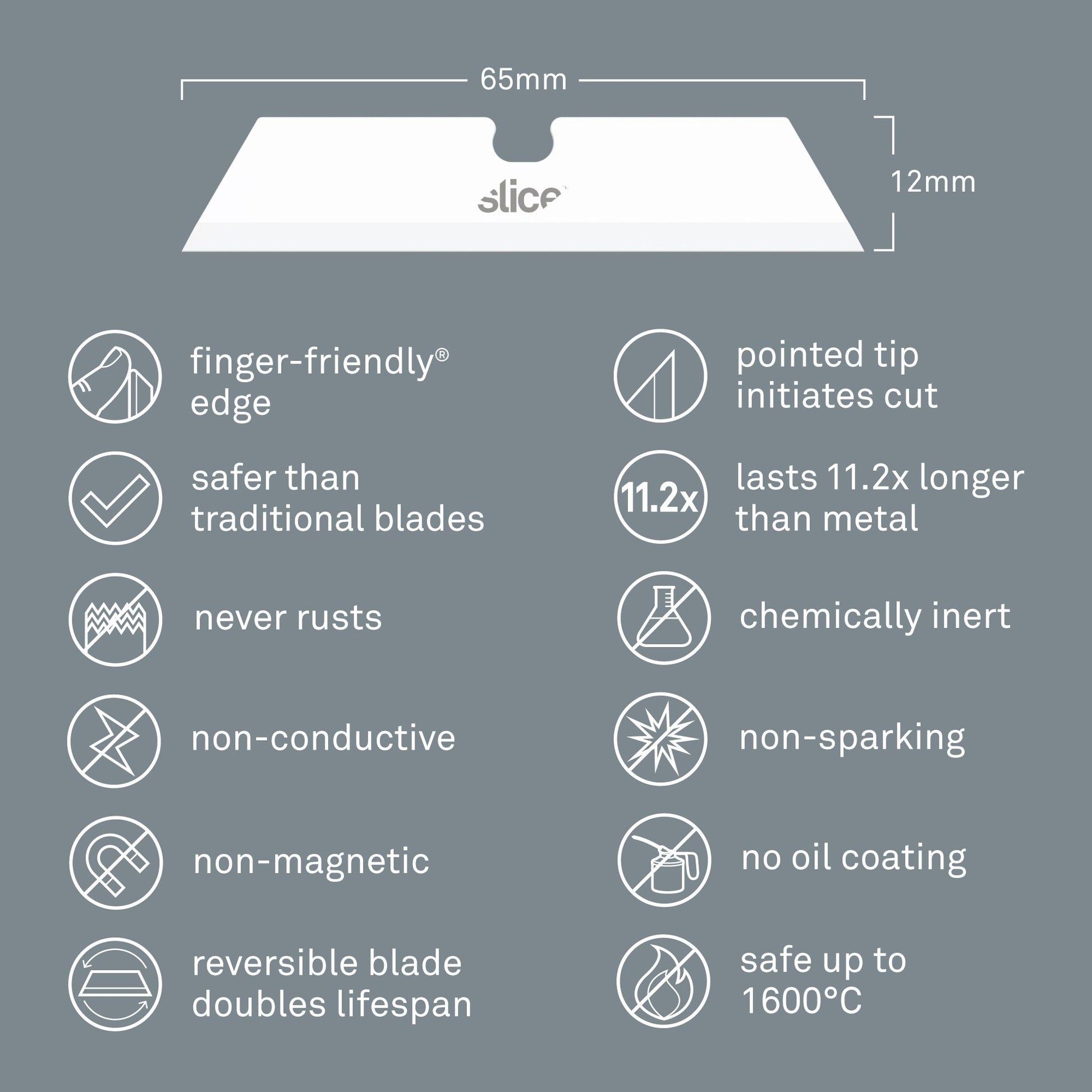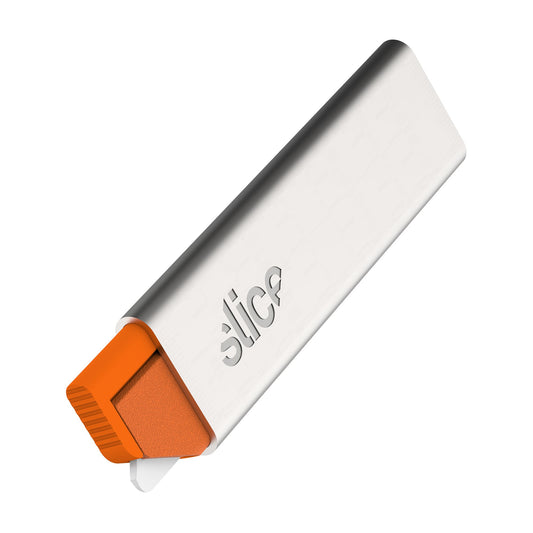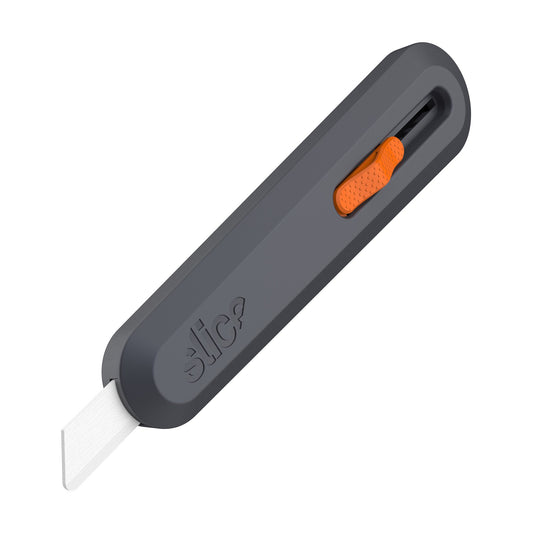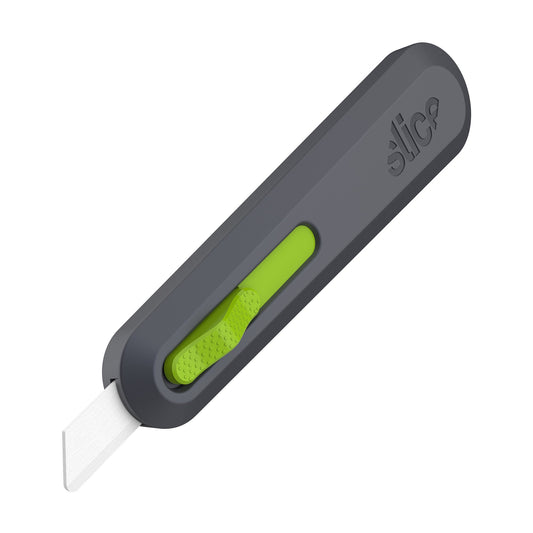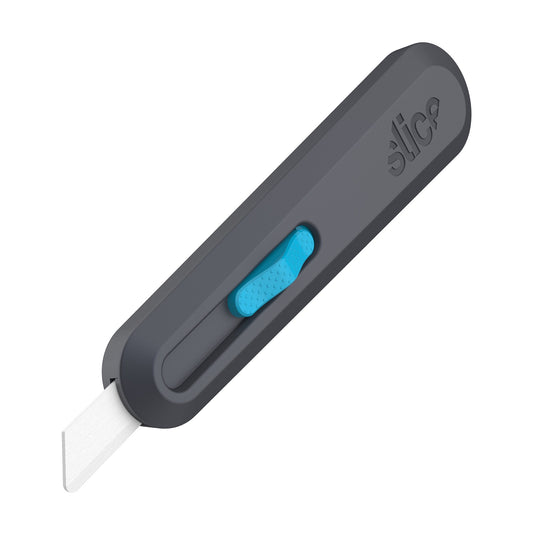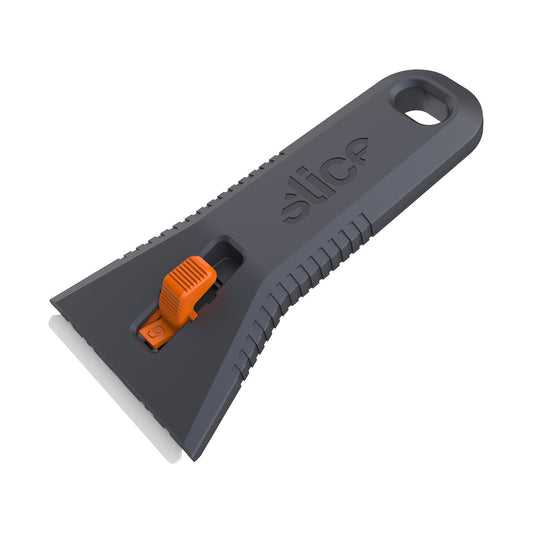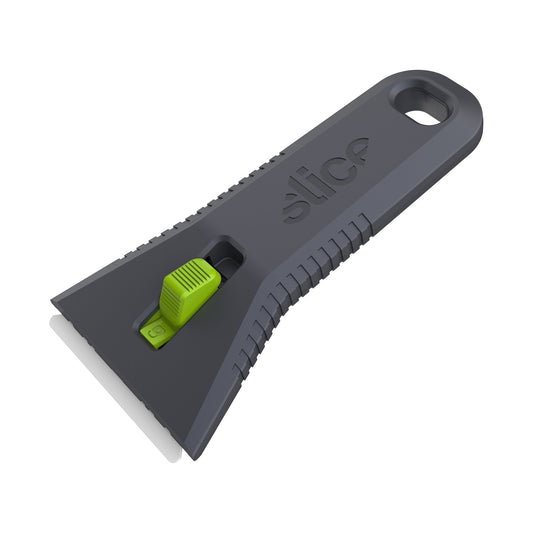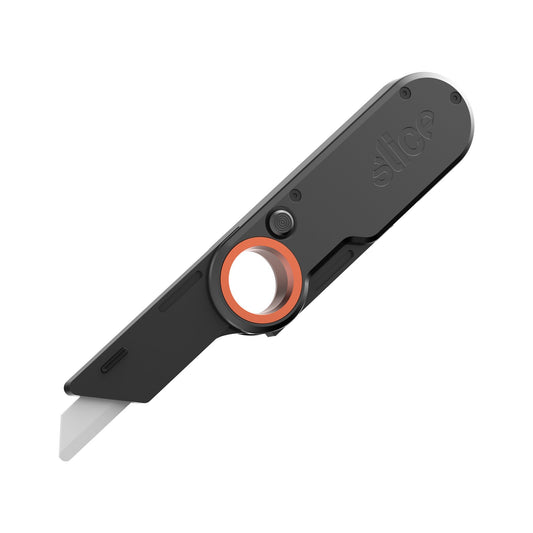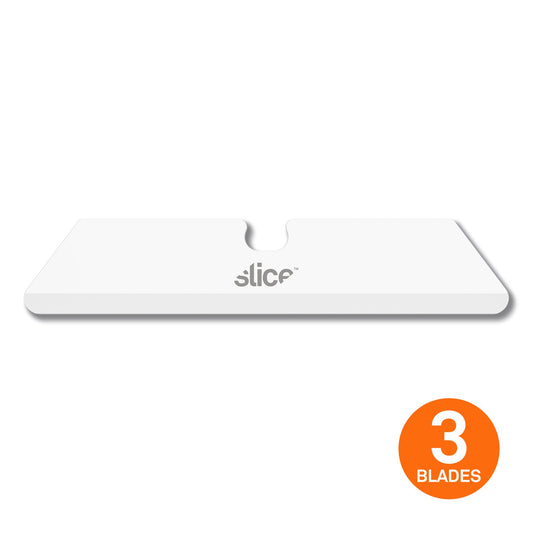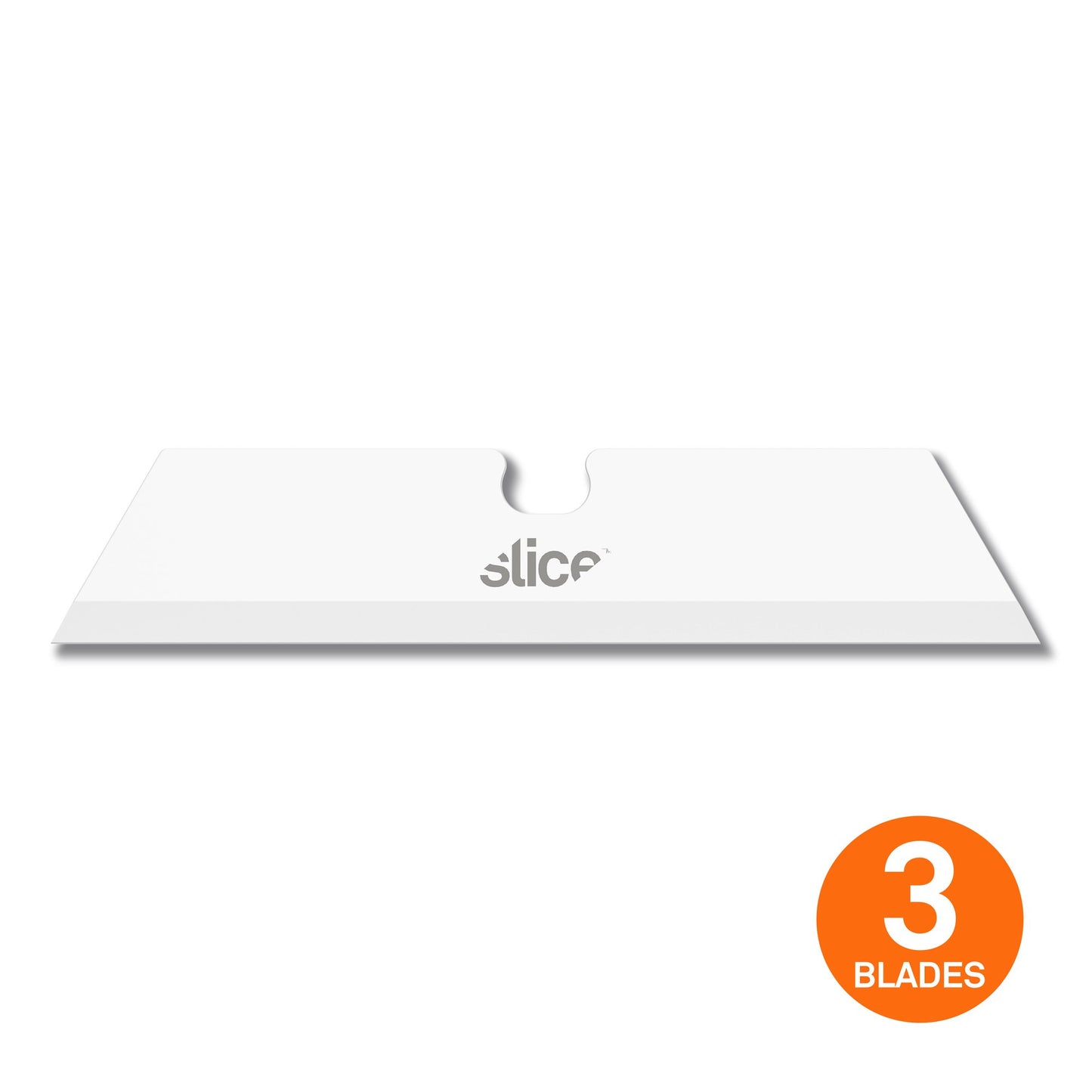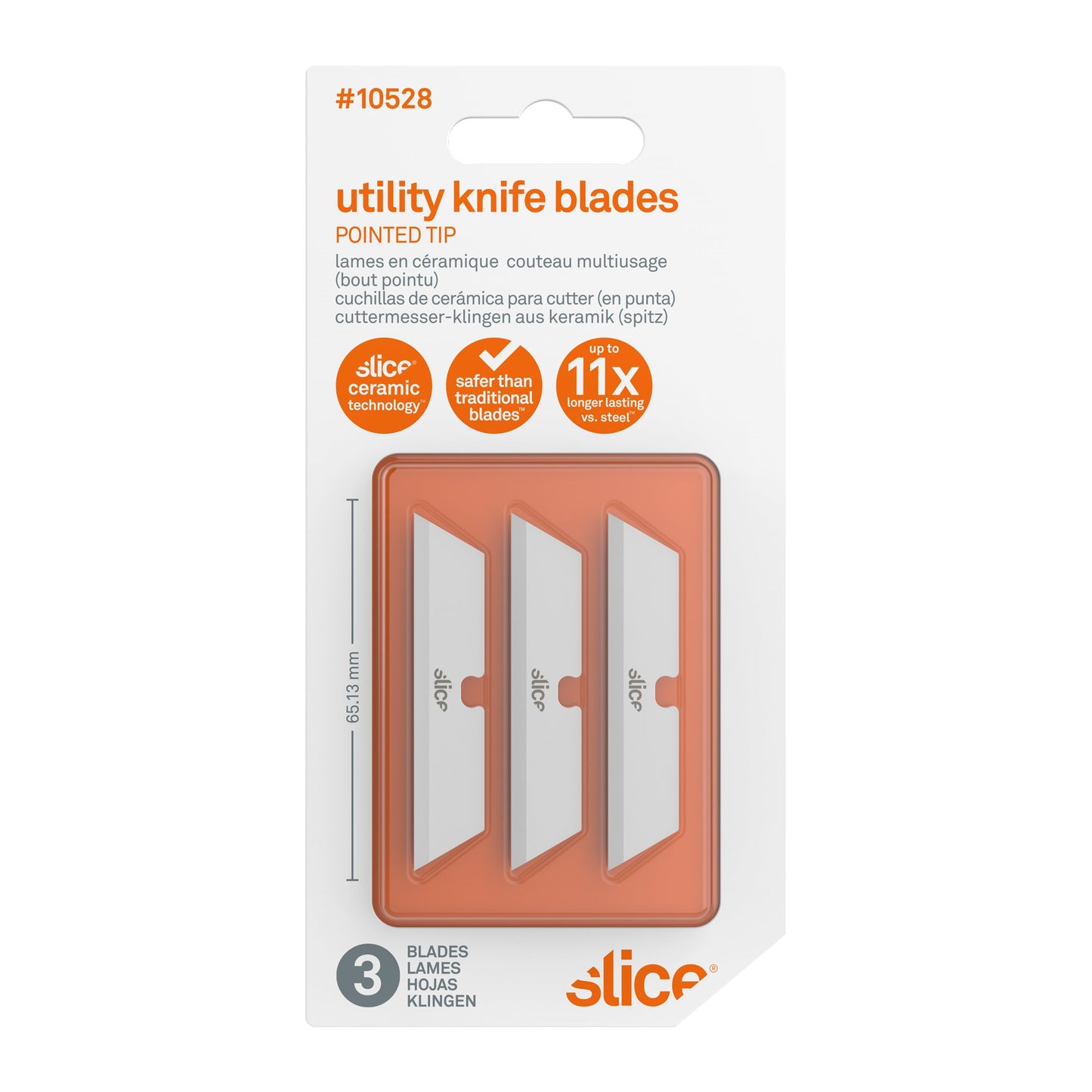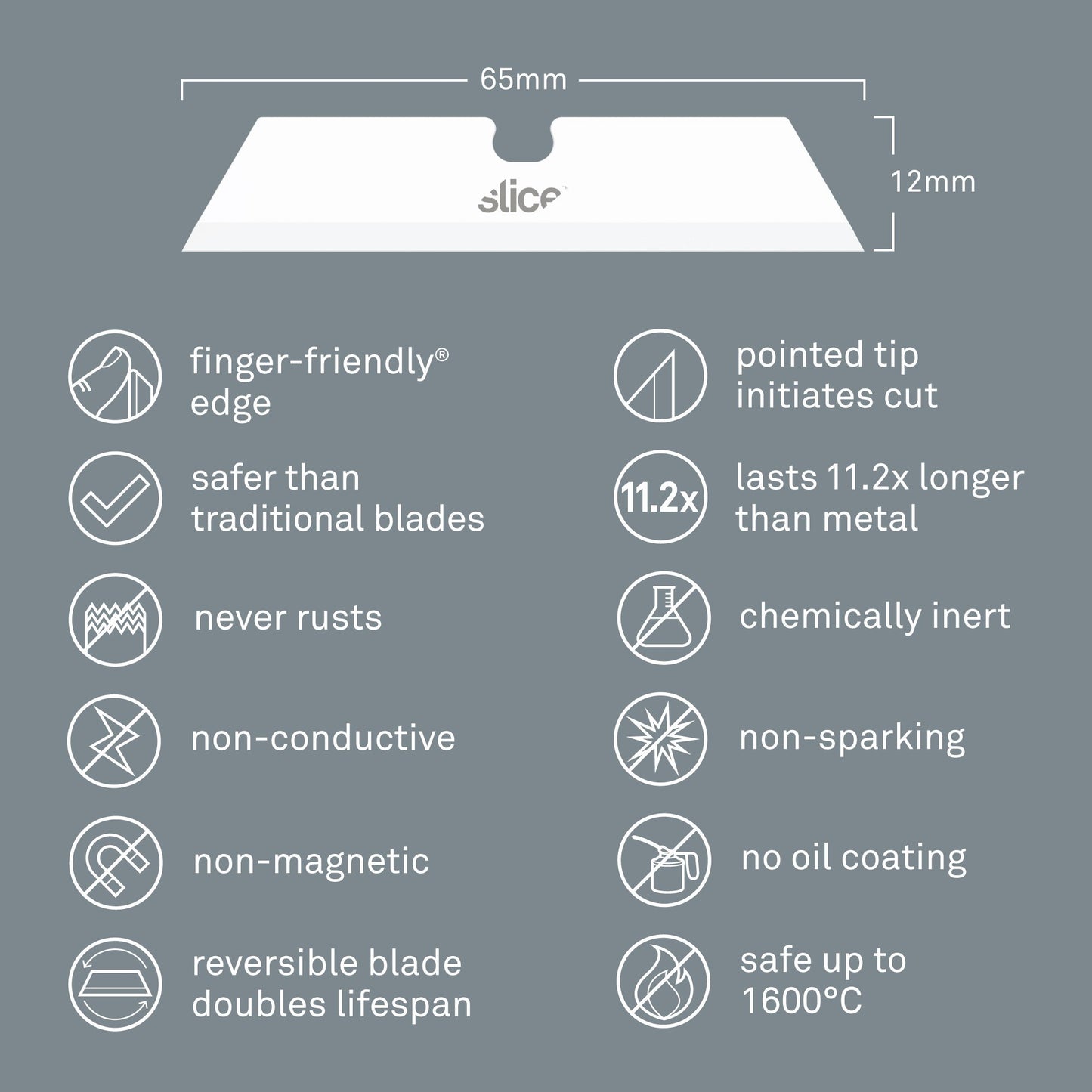Cuchillas para cutter (en punta)
Precio habitual
$25.49 USD
Precio habitual
Precio de oferta
$25.49 USD
Precio unitario
por
SKU #10528
No se pudo cargar la disponibilidad de retiro
Las cuchillas para cutter Slice 10528 tienen una terminación en punta ideal para cortes que requieren de una perforación inicial. Al igual que todas las cuchillas de cerámica de Slice, nuestras cuchillas 10528 no producen chispas ni son magnéticas, son químicamente inertes, seguras hasta temperaturas de 1600 ºC y nunca se oxidan. Estas cuchillas son compatibles con todos los cutters de Slice.
- Tipo de cuchilla: en punta
- 3 cuchillas de doble cara por paquete
- Herramientas compatibles: 10477, 10479, 10550, 10554, 10558, 10562, 10563, 10564, 10585, 10591, 10593
- El filo seguro para los dedos se mantiene afilado hasta 11x más tiempo
- Minimiza lesiones, reduce los costos
- Se mantiene en perfectas condiciones en temperaturas de hasta 1600 ºC
- Químicamente inerte, nunca se oxida
- No se precisan herramientas para cambiar la cuchilla
- Menos cambios de cuchilla = menos lesiones
- Ref. # 10528
Product Specifications
Product Specifications
Cutting Depth:
Material: zirconium oxide
Dimensions: L x W x H
Weight: 0.06 lbVideos
-
Cut Roof Membrane Safely With Slice
-
How to Cut Pallet Wrap and Banding
-
How to Cut Ceiling Tile: Safety First
-
How to Cut Corrugated Plastic Sheets Using Slice Tools
-
How to Cut Drywall Safely With Slice
-
How To Cut Mylar Stencils
-
Cutting Ram Board®
-
How to Cut Super Sacks® Easily and Safely
-
How To Cut Window Screen Using Slice Tools
-
The Correct Technique to Cut Plastic Banding
-
Blade Replacement for the Folding Utility Knife
-
Replacing Carton Cutter Blades
-
Blade Replacement on Slice Utility Scrapers
-
Blade Replacement for Slice Utility Knives
Compatible Products
-
Cutter para cartón
Precio habitual $12.99 USDPrecio habitualPrecio unitario por -
Cutter manual
Precio habitual $29.49 USDPrecio habitualPrecio unitario por -
Cutter autoretráctil
Precio habitual $29.49 USDPrecio habitualPrecio unitario por -
Cutter retráctil inteligente
Precio habitual $31.99 USDPrecio habitualPrecio unitario por -
Rasqueta multiusos
Precio habitual $25.49 USDPrecio habitualPrecio unitario por -
Rasqueta multiusos autoretráctil
Precio habitual $25.49 USDPrecio habitualPrecio unitario por -
Cutter plegable
Precio habitual $50.99 USDPrecio habitualPrecio unitario por
Related Products
-
Cuchillas para cutter (punta redonda)
Precio habitual $25.49 USDPrecio habitualPrecio unitario por
FAQ
Are Slice Ceramic Utility Knife Blades Safer?
Compared with standard blades (that’s steel or traditional ceramic), the answer is yes. When you search “how to change a utility knife blade”, you learn that the process is often dangerous. Overly sharp blades leave your hands vulnerable to injury.
Because we developed a proprietary finger-friendly edge for our ceramics, handling a Slice ceramic blade is less dangerous than handling a traditional ceramic or steel utility knife blade. Our manufacturing process creates an edge that effectively cuts material but is safe to the touch.
Slice utility knife replacement blades are made from hard zirconium oxide. That, along with our manufacturing process, is why our blades hold their edge, on average, 11.2 times longer than steel. This means you’ll be handling your blade much less often, which also reduces the chance of injuries.
Because we developed a proprietary finger-friendly edge for our ceramics, handling a Slice ceramic blade is less dangerous than handling a traditional ceramic or steel utility knife blade. Our manufacturing process creates an edge that effectively cuts material but is safe to the touch.
Slice utility knife replacement blades are made from hard zirconium oxide. That, along with our manufacturing process, is why our blades hold their edge, on average, 11.2 times longer than steel. This means you’ll be handling your blade much less often, which also reduces the chance of injuries.
Which Type of Utility Knife Blade Should I Use for the Job?
The best utility knife blades will depend on your application. For most cuts, our 10526 (rounded tip) blades will do the job. The rounded tip provides an added layer of safety against accidental puncture wounds. For some materials, though, a pointed tip is required. A pointed tip initiates a clean cut with a piercing action and is best used for materials like shrink wrap, laminating sheets and plastic banding.

